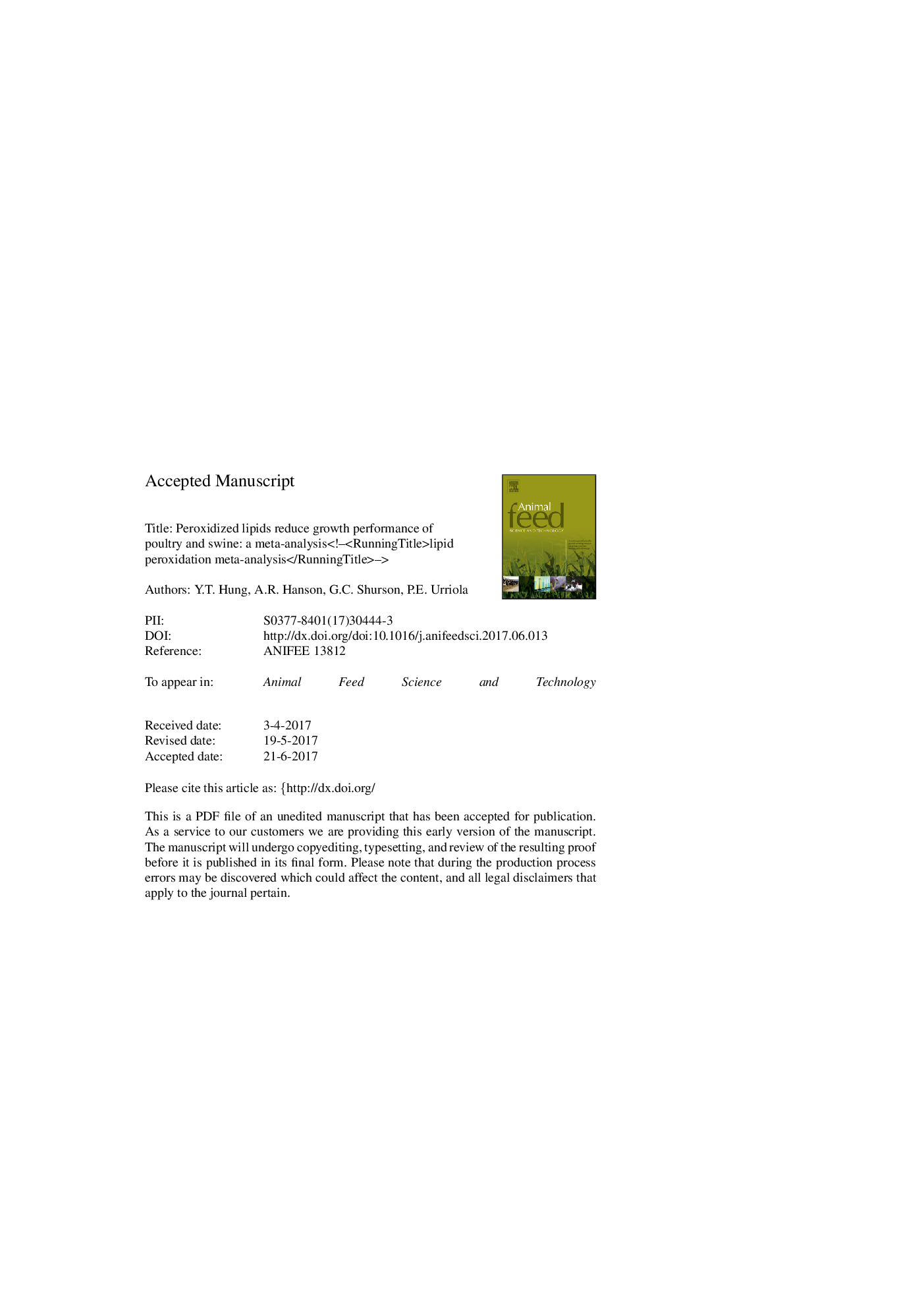ترجمه فارسی عنوان مقاله
لیپید های پراکسید شده باعث کاهش عملکرد رشد طیور و خوک می شوند: یک متاآنالیز
عنوان انگلیسی
Peroxidized lipids reduce growth performance of poultry and swine: A meta-analysis
| کد مقاله | سال انتشار | تعداد صفحات مقاله انگلیسی |
|---|---|---|
| 113084 | 2017 | 35 صفحه PDF |
منبع

Publisher : Elsevier - Science Direct (الزویر - ساینس دایرکت)
Journal : Animal Feed Science and Technology, Volume 231, September 2017, Pages 47-58

